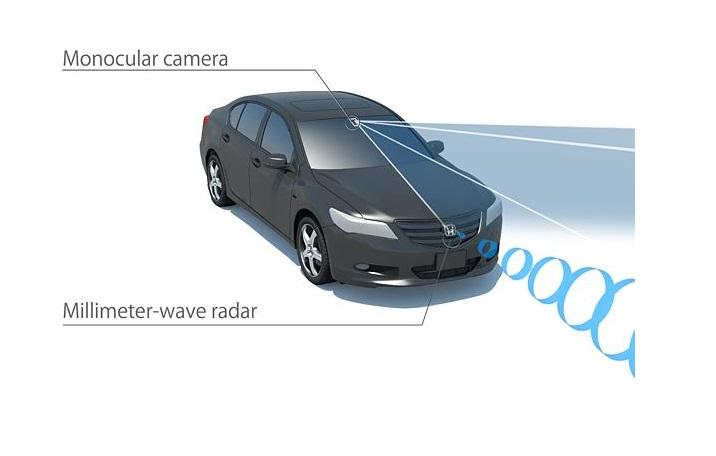
The central components of Sensing are a millimeter-wave radar integrated into the radiator grille and a monocular camera mounted right above the rear-view mirror. The radar detects objects in the road such as pedestrians while the camera gathers key information such as the size and the speed of objects that are up to 200 feet in front of the car.
The information gathered by the camera and the radar is processed and used by a wide variety of functions including a Collision Mitigation Braking System that applies the brakes if it senses a crash is imminent, a Road Departure Mitigation system that can steer the car back in its lane and a world-first Pedestrian Collision Mitigation Steering System that automatically turns the steering wheel in the opposite direction if it senses the car is about to hit a pedestrian.
Related: 275+ Civic Type R concept
Sensing also includes adaptive cruise control, traffic sign recognition and lane-keeping assist. It can also apply the brakes if it senses the gas pedal has been pushed erroneously such as when the car is stopped at a traffic light.
Honda’s new Sensing technology will debut before the end of the year in the Legend, a Japan-only luxury sedan that is known as the Acura RLX in the United States. The technology will gradually make its way to other members of the automaker’s Japanese lineup, and it will be offered on this side of the Pacific in the coming months.
In the long run, Sensing is expected to provide the foundations for Honda’s self-driving technology.
Editors' Recommendations
- Honda Clarity Electric gets unplugged, won’t return for new model year
- Honda joins GM, Mercedes, Toyota in self-driving group
- Honda’s new airbag functions like a baseball catcher’s mitt



